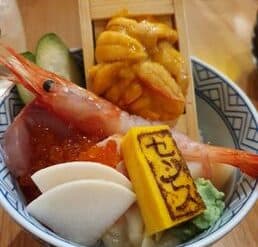Introduction to Echidnas: Nature’s Spiky Marvels
Hey there, amazing parents and curious kids! Are you ready to embark on a spiky adventure and learn all about one of the most unique creatures found in the wild? Yes, we’re talking about echidnas! These adorable animals are not only a delightful wonder of nature but also a fantastic topic for family educational fun. So, buckle up as we unravel the mysteries of echidnas together!
What is an Echidna?
Before diving into the quirky world of echidnas, let’s get the basics down. An echidna, also known as a “spiny anteater,” is a monotreme, which means it’s one of the only egg-laying mammals on our planet. That’s right – like the famous platypus, these creatures break the mold of typical mammalian reproduction.
The Four Fascinating Species
There aren’t just one, but four different species of echidnas! These include the Short-beaked Echidna, which you can find scuttling around Australia and New Guinea, and three species of Long-beaked Echidnas that are exclusive residents of New Guinea. Each species has its own quirky habits and habitats, making them a diverse bunch.
Echidna Biology and Behavior
Now, let’s get under those spines and see what makes echidnas so remarkable. Wrapped in a coat of sharp spines, which are actually modified hairs, echidnas have a distinctive appearance and defense mechanism. But don’t worry, they’re not out to prick anyone intentionally – their spines are just there to help keep them safe from predators.
One of the echidna’s standout features is their elongated snout, which serves as both nose and mouth. With it, they can feast on their favorite snacks: ants and termites. And here’s a fun fact to impress your little ones – echidnas have a tongue up to 18 centimeters long that zips in and out to catch those delicious critters!
Echidnas’ Role in the Ecosystem
Echidnas aren’t just cool to learn about; they play a crucial role in their ecosystems. By feeding on insects, they help control pest populations and aerate the soil – nature’s little gardeners, if you will.
Protecting the Echidna
While echidnas are pretty awesome, they, like many other species, face threats from habitat destruction and human encroachment. Teaching our kiddos about these animals raises awareness about conservation and the importance of caring for all creatures, big and small.
So, let’s raise our next generation to be echidna experts and protectors of the natural world. Together, we can ensure these quirky animals stick around for many more generations to enjoy.
Join us as we continue to explore the fascinating world of echidnas. From their diet and habitat to their remarkable mating rituals and survival skills, we will cover it all. Let’s help our children discover the wonders of nature with a deep dive into the life of echidnas. Stay tuned for more spikes of knowledge!
This is just the beginning of our echidna exploration. Keep your eyes peeled for the next installment where we’ll delve deeper into the echidna’s unique reproductive process, conservation efforts, and how you, as a family, can help make a difference!

5 Things Parents Should Know About Echidnas
As we continue our echidna journey, there are some vital bits of information every parent should have in their nature exploration toolkit. So here are five things you should know when you are preparing to teach your kids about these spiny yet adorable creatures.
1. Echidnas Are Solitary and Shy
Echidnas are typically loners, and they enjoy their own company. They are shy and peaceful animals, not known for aggressive behavior. Understanding this will help to set the right expectations with your little ones – they’re the quiet neighbors of the animal kingdom!
2. Echidnas Have a Special Diet
Despite their name ‘spiny anteaters’, echidnas don’t just munch on ants. Their diet is quite diverse, including termites, worms, and larvae. To help your kids understand, try creating fun and interactive games that imitate how echidnas eat – maybe a ‘bug hunt’ in the backyard using a straw to simulate their long tongues.
3. Echidnas Have Unique Reproductive Habits
Echidnas lay eggs, which is quite rare for mammals! The female echidna carries the egg in a pouch until it hatches; then the baby, called a puggle, stays there until it develops spines. This can be a cute and interesting fact that sparks further discussions about reproduction in the animal kingdom.
4. Echidnas are Ingenious Survivors
In times of danger, echidnas are known to burrow into the ground or hide under foliage, using their spines as a protective shield. Their survival techniques can be great lessons in adaptation and protection mechanisms for kids.
5. Engage in Echidna Conservation Efforts
Encouraging an early love for wildlife and conservation can be sparked by learning about echidnas. Look for local conservation programs or online resources that can guide you and your family on how to help protect these amazing creatures. Even simple acts like maintaining the backyard as a friendly habitat can teach children valuable lessons about coexisting with nature.
Exploring Echidna Habitats
Understanding an animal’s habitat is vital for appreciating the intricacies of their lifestyles. Echidnas are versatile dwellers, found in forests, deserts, and even highland areas. When teaching your kids, utilize visual aids like maps or documentaries to show where echidnas live and discuss how they’ve adapted to their diverse habitats.
The Importance of Echidna Research and Awareness
Scientific research and awareness are key to the survival of echidnas. By supporting organizations that study these creatures, we can help uncover more secrets about their behavior and how we can protect their habitats. Simple steps such as sharing articles or fun echidna facts on social media can boost awareness and kindle a passion for wildlife among your family and friends.
Explore, discover, and marvel at the world of echidnas with your children. It’s a journey of learning and appreciation that can help nurture a lifetime of respect and care for our planet’s incredible wildlife. Stay curious, keep learning, and let the spiky charm of echidnas inspire your family’s next nature adventure!
For more great fun click here. For more information see here
Disclaimer
The articles available via our website provide general information only and we strongly urge readers to exercise caution and conduct their own thorough research and fact-checking. The information presented should not be taken as absolute truth, and, to the maximum extent permitted by law, we will not be held liable for any inaccuracies or errors in the content. It is essential for individuals to independently verify and validate the information before making any decisions or taking any actions based on the articles.




